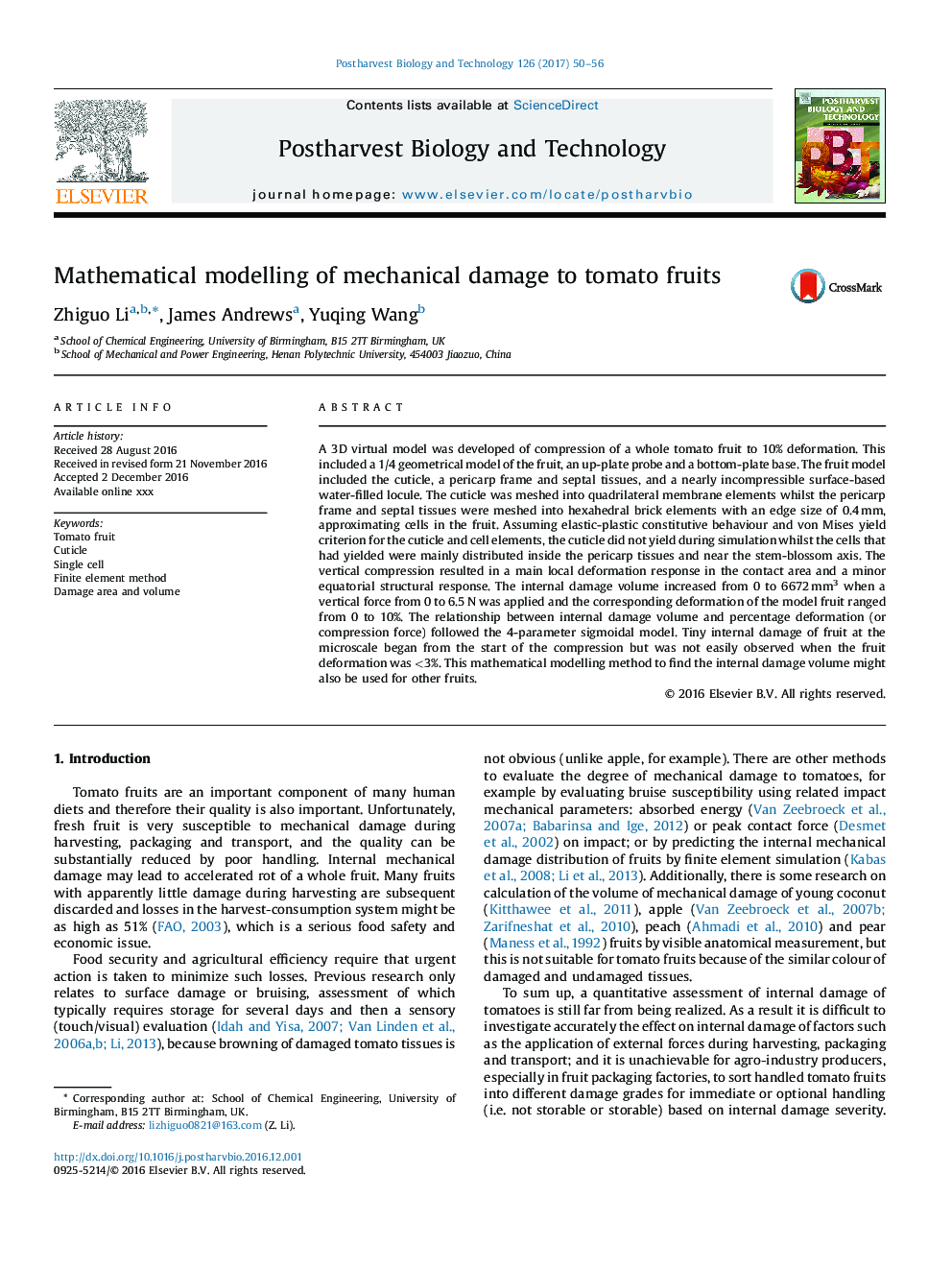| Article ID | Journal | Published Year | Pages | File Type |
|---|---|---|---|---|
| 5762792 | Postharvest Biology and Technology | 2017 | 7 Pages |
Abstract
A 3D virtual model was developed of compression of a whole tomato fruit to 10% deformation. This included a 1/4 geometrical model of the fruit, an up-plate probe and a bottom-plate base. The fruit model included the cuticle, a pericarp frame and septal tissues, and a nearly incompressible surface-based water-filled locule. The cuticle was meshed into quadrilateral membrane elements whilst the pericarp frame and septal tissues were meshed into hexahedral brick elements with an edge size of 0.4Â mm, approximating cells in the fruit. Assuming elastic-plastic constitutive behaviour and von Mises yield criterion for the cuticle and cell elements, the cuticle did not yield during simulation whilst the cells that had yielded were mainly distributed inside the pericarp tissues and near the stem-blossom axis. The vertical compression resulted in a main local deformation response in the contact area and a minor equatorial structural response. The internal damage volume increased from 0 to 6672Â mm3 when a vertical force from 0 to 6.5Â N was applied and the corresponding deformation of the model fruit ranged from 0 to 10%. The relationship between internal damage volume and percentage deformation (or compression force) followed the 4-parameter sigmoidal model. Tiny internal damage of fruit at the microscale began from the start of the compression but was not easily observed when the fruit deformation was <3%. This mathematical modelling method to find the internal damage volume might also be used for other fruits.
Related Topics
Life Sciences
Agricultural and Biological Sciences
Agronomy and Crop Science
Authors
Zhiguo Li, James Andrews, Yuqing Wang,
